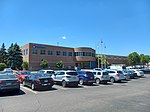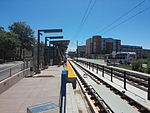Center for Victims of Torture
The Center for Victims of Torture (CVT) is an international non-profit headquartered in St. Paul, Minnesota that provides direct care for those who have been tortured, trains partner organizations in the United States and around the world who can prevent and treat torture, conducts research to understand how best to heal survivors, and advocates for an end to torture. CVT's mission is to heal the wounds of torture on individuals, their families and their communities, and to end torture worldwide and it has won the APA International Humanitarian Award from the American Psychological Association Since its founding in 1985, CVT has: Rehabilitated over 30,000 survivors through direct healing. Engaged in post-conflict community building after some of the world's deadliest wars, working in Guinea, Sierra Leone, Liberia, Democratic Republic of Congo, Jordan and Kenya. Pioneered research in torture survivor rehabilitation to better understand the effects of torture and how best to heal survivors. Led efforts to end the practice of torture by the US government, including President Obama's executive order banning torture and cruel treatment.CVT provides care for survivors at its healing center in St. Paul, Minnesota and at projects in Jordan, the Dadaab refugee camps in Kenya, Nairobi, Kenya, Uganda and in northern Ethiopia working with Eritrean refugees. It has an office in Washington D.C. The Center for Victims of Torture is a 501(c)(3) organization that is recognized by the Charities Review Council, the American Institute of Philanthropy, and Charity Navigator for its well-managed use of donations.
Excerpt from the Wikipedia article Center for Victims of Torture (License: CC BY-SA 3.0, Authors).Center for Victims of Torture
University Avenue, Saint Paul Saint Anthony Park
Geographical coordinates (GPS) Address Nearby Places Show on map
Geographical coordinates (GPS)
| Latitude | Longitude |
|---|---|
| N 44.963333333333 ° | E -93.197222222222 ° |
Address
University Avenue 2356
55114 Saint Paul, Saint Anthony Park
Minnesota, United States
Open on Google Maps







